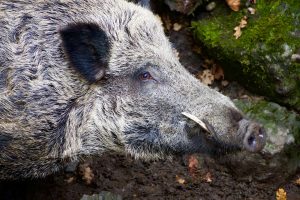
In the wake of the 1986 Chernobyl nuclear disaster, 1000 square miles of surrounding territory were evacuated of all inhabitants and left fallow ever since. Despite high levels of background radiation, the Chernobyl Exclusion Zone (as it is known) has become a thriving haven for wildlife (funny how big a difference the total absence of human beings can make!). After being off-limits to humans for more than thirty years, today the area is thickly forested and home to wildcats, deer, and bison, among other large mammals.
Something similar has happened in the area around the Fukushima Daiichi Nuclear Power Plant in Japan after the 2011 tsunami and ensuing nuclear disaster. From the BBC:
“Once people were gone, the boar took over,” explains Donovan Anderson, a researcher at Fukushima University in Japan.
His genetic study of the wild boar that roam in an area largely abandoned after Japan’s 2011 nuclear disaster – has revealed how the animals have thrived.
Using DNA samples, he also discovered that boar have bred with domestic pigs that escaped from farms.
This has created wild pig-boar hybrids that now inhabit the zone.
Apparently, these boar pose such a nuisance that the Japanese government has contracted local hunters to cull them.







